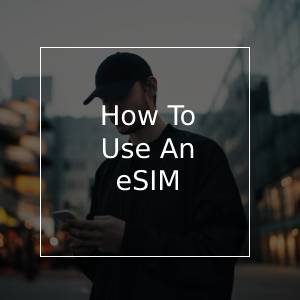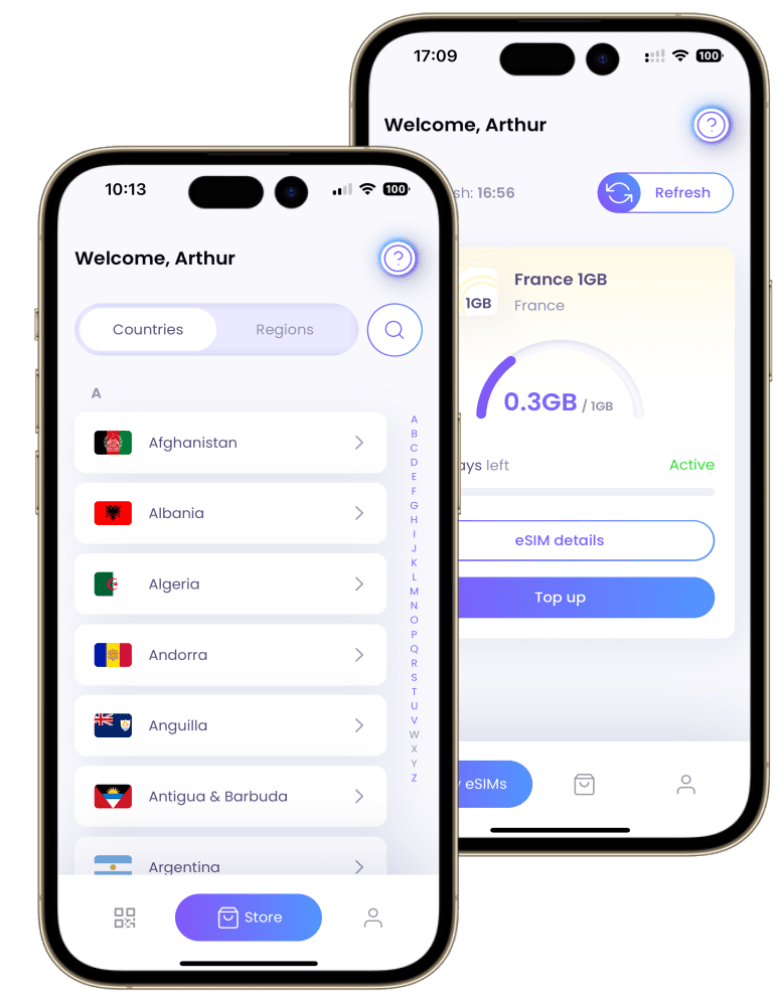eSIM vs Physical SIM
When a new technology emerges, it’s essential to compare it with existing options to determine whether it’s truly an upgrade. eSIMs, or embedded SIMs, are increasingly popular, but do they offer enough advantages to replace traditional SIM cards? In this article, we will explore the similarities, differences, and benefits of each to help you decide which suits your needs best.
Understanding the Key Differences
SIM cards and eSIMs serve the same purpose: they connect your device to a mobile network. However, they differ in form, functionality, and ease of use.
A SIM card is a small, removable chip that contains information about your phone number and mobile plan. It can be inserted into different phones, making it easy to switch devices. However, SIM cards are prone to damage, loss, and hacking attempts.
An eSIM is a built-in, non-removable SIM that is digitally activated. Instead of inserting a physical card, you scan a QR code or download carrier information directly to your phone. Because it is embedded, it cannot be lost or physically stolen, making it more secure.
Comparison Table: eSIM vs. Physical SIM
Key Differences Between SIM and eSIM:
| Feature | eSIM | Physical SIM |
|---|---|---|
| Form Factor | Embedded in the device | Removable chip |
| Switching Carriers | Done digitally via software | Requires physical replacement |
| Security | More secure, harder to hack | Vulnerable to SIM-swapping attacks |
| Device Compatibility | Supported on newer smartphones | Works on almost all phones |
| Ease of Use | Instant activation via QR code | Requires manual insertion |
| Availability | Not yet supported by all carriers | Widely available |
| Durability | Cannot be lost or damaged | Can be lost, stolen, or damaged |
| Dual SIM Support | Works with physical SIM in dual-SIM devices | Can be used alongside an eSIM in dual-SIM phones |
| Travel Convenience | Easily switch plans remotely | Prepaid SIMs are widely available in airports |
Similarities Between eSIMs & Physical SIM Cards
Despite their differences, SIM cards and eSIMs share several common features:
Both technologies allow your phone to connect to a carrier’s network, enabling calls, text messaging, and mobile data access. Once activated, you can use either to make and receive calls, send SMS, and browse the internet.
Many modern smartphones support dual-SIM functionality, meaning you can use a physical SIM and an eSIM simultaneously. This is particularly useful for people who want to keep separate work and personal numbers on the same device.
Additionally, SIM cards and eSIMs store important information such as your phone number, carrier details, and authentication keys, ensuring that your device can seamlessly access mobile services.
The Advantages of Physical SIM Cards
While eSIMs are gaining traction, traditional SIM cards still offer several benefits:
• Wide Availability: SIM cards have been around for decades and are supported by virtually all mobile carriers. If you’re in a location where eSIMs are not widely available, a SIM card may be your best option.
• Easy Swapping: If your phone battery runs out, you can move your SIM card to another device and continue using your plan instantly.
Prepaid Convenience: Travelers can easily buy prepaid SIM cards upon arrival in a new country, often at airports or convenience stores.
• Compatible with Older Phones: If you have an older phone that does not support eSIM technology, a physical SIM is your only option.
The Advantages of eSIMs
As technology evolves, eSIMs are becoming the preferred choice for many smartphone users. Here’s why:
• No Risk of Loss or Damage: Since the SIM is embedded in your phone, there’s no chance of misplacing or breaking it.
• More Secure: eSIMs are harder to clone or hack compared to traditional SIM cards, making them a safer option for protecting your personal data.
• Saves Space: Without the need for a SIM tray, manufacturers can use the extra space to improve battery life or add other features.
• Seamless Carrier Switching: Switching mobile carriers no longer requires a physical SIM swap—simply download a new eSIM profile and activate your plan instantly.
Frequently Asked Questions
What are the disadvantages of SIM cards?
Physical SIM cards can be lost, stolen, or damaged over time. Additionally, they are vulnerable to SIM-swapping scams, where hackers gain access to your phone number and sensitive accounts. Swapping between devices also requires physically handling the SIM card, which can be inconvenient.
What are the disadvantages of eSIMs?
While eSIMs offer many advantages, they are not yet supported by all carriers. If you have an older phone, you won’t be able to use an eSIM unless you upgrade. Additionally, since eSIMs are built-in, you cannot quickly transfer them to another device if your phone battery dies.
Can I get a phone with SIM and eSIMs?
Yes! Many modern smartphones support dual-SIM functionality, allowing you to use both a physical SIM and an eSIM. This feature is particularly beneficial for frequent travelers or professionals who need separate business and personal numbers.
Which One Should You Choose?
Choosing between a SIM card and an eSIM depends on your specific needs. If you travel frequently, need quick carrier switching, or prefer a more secure option, an eSIM is the better choice. However, if you rely on an older phone, frequently swap between devices, or need a prepaid plan that’s easy to access, a traditional SIM card may still be more practical.
As technology progresses, eSIM adoption will continue to grow, but for now, both options remain relevant. Whether you stick with a SIM card or switch to an eSIM, the most important factor is choosing what best suits your lifestyle and mobile needs.










